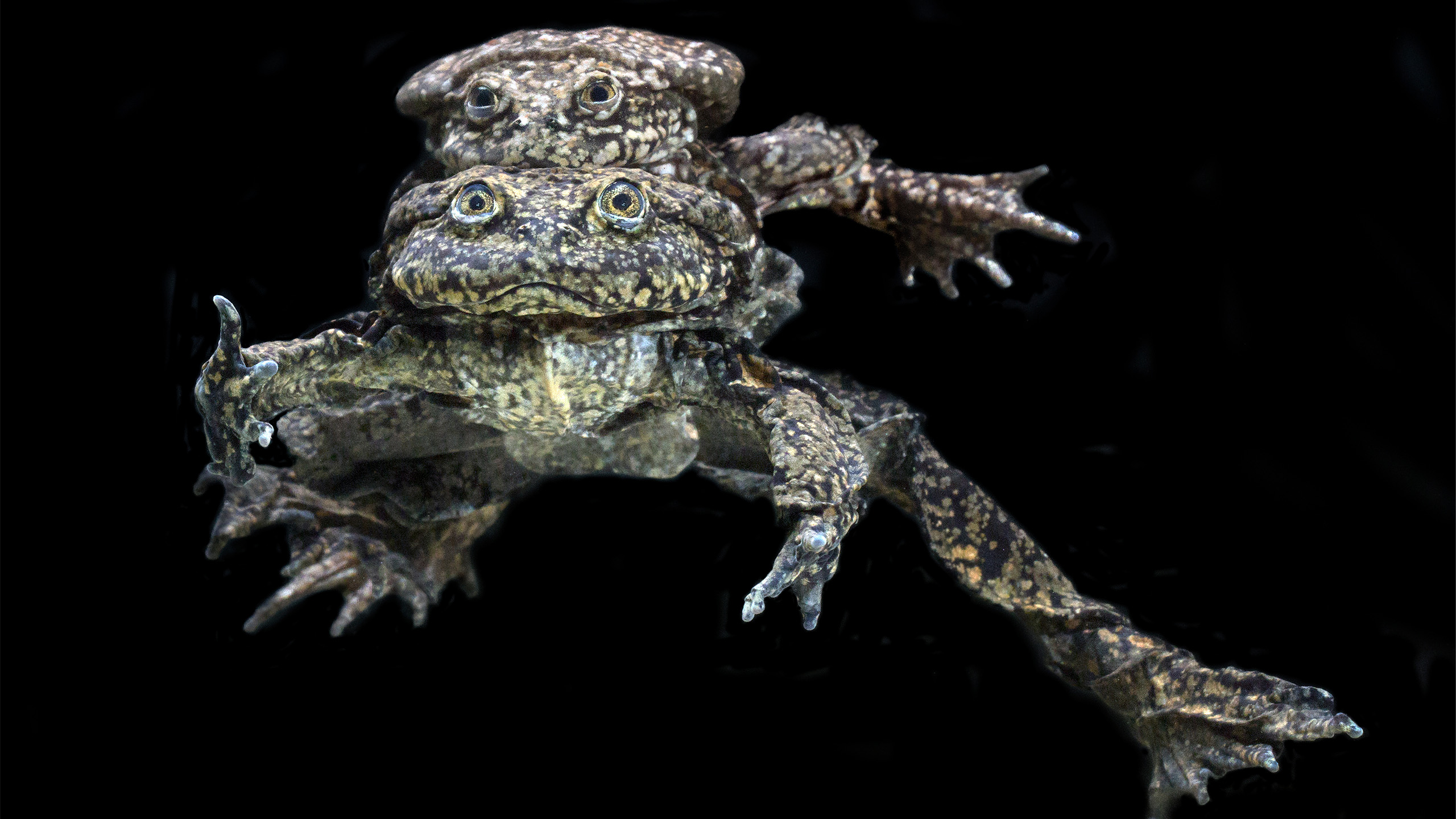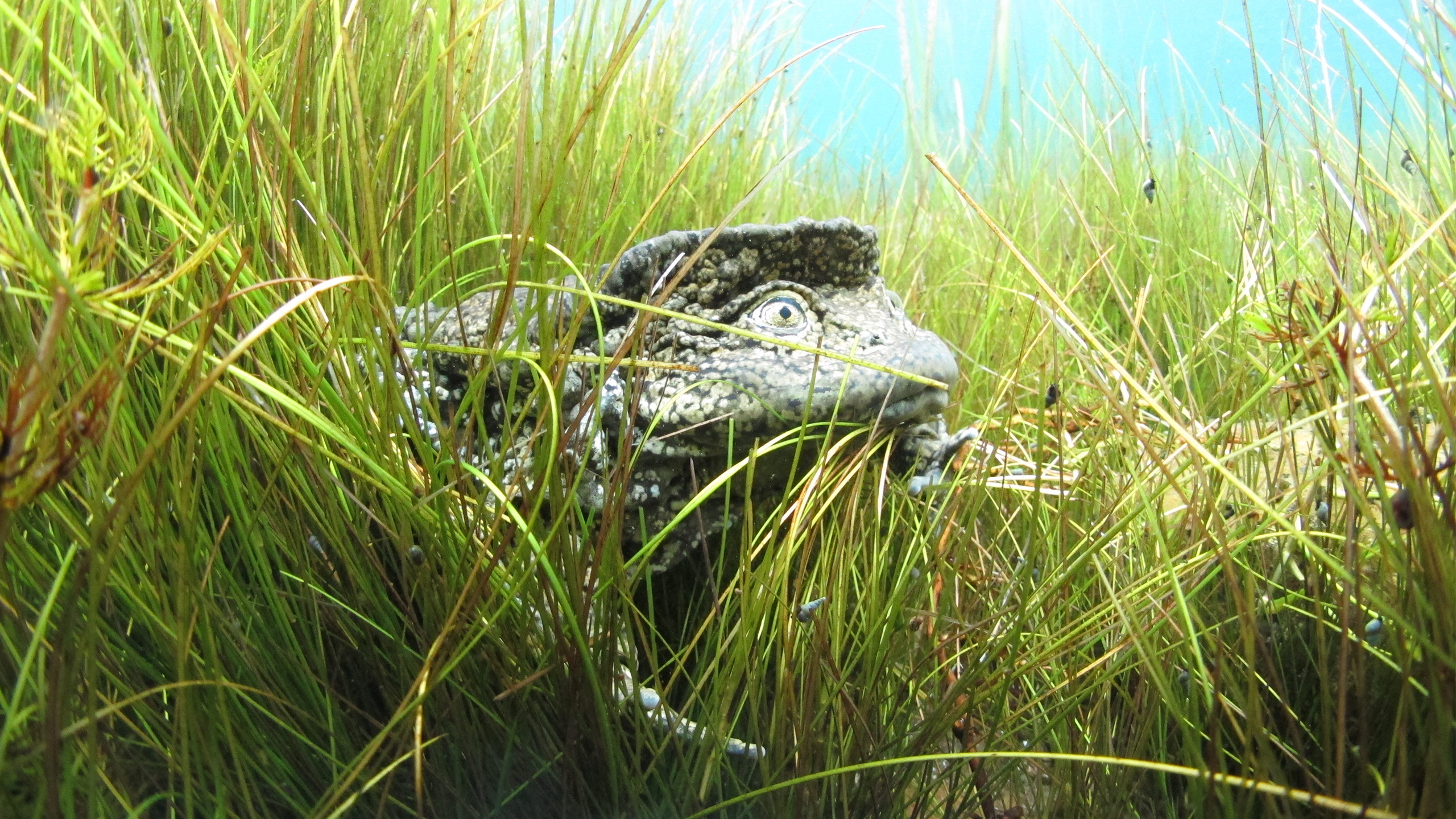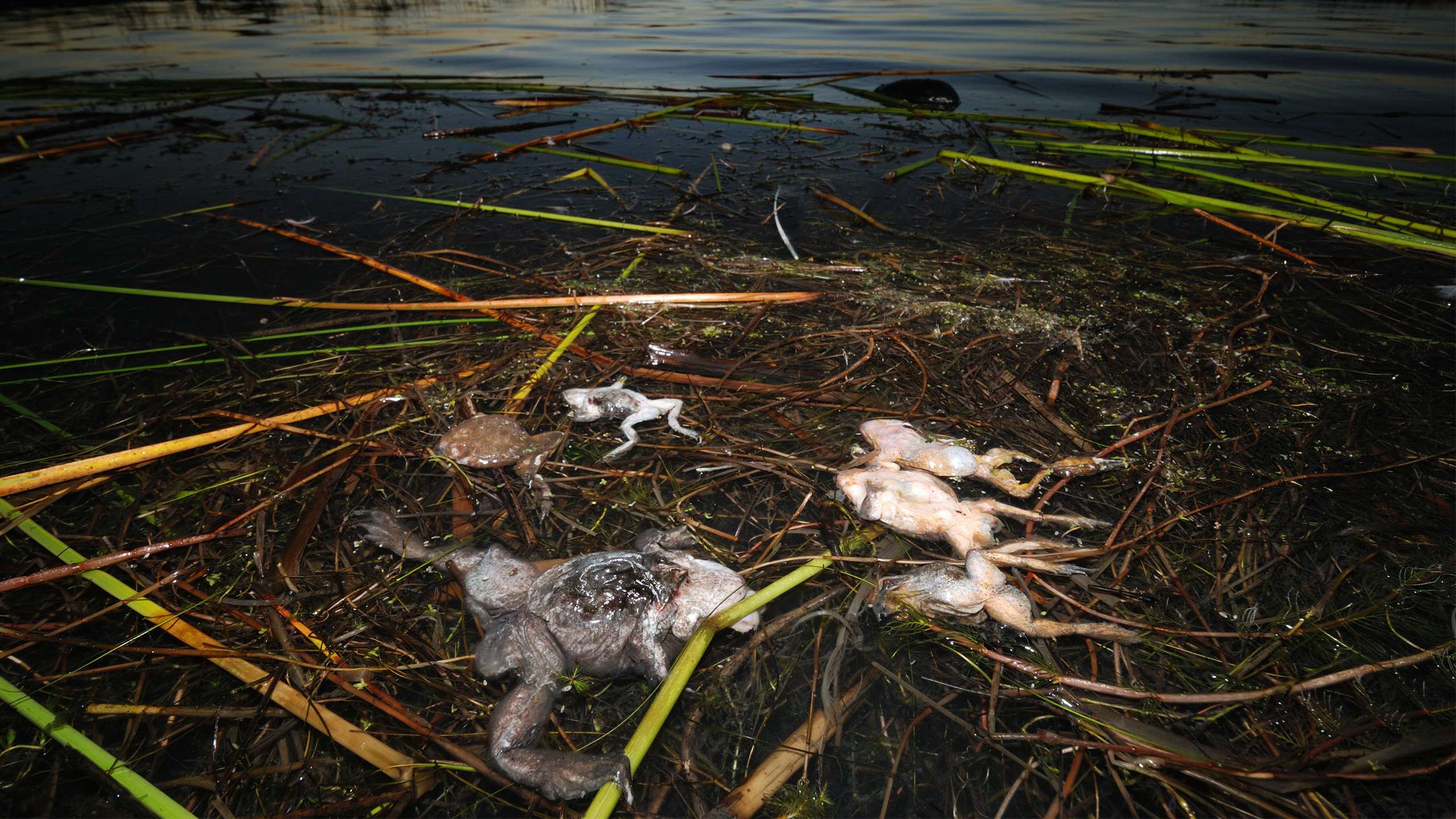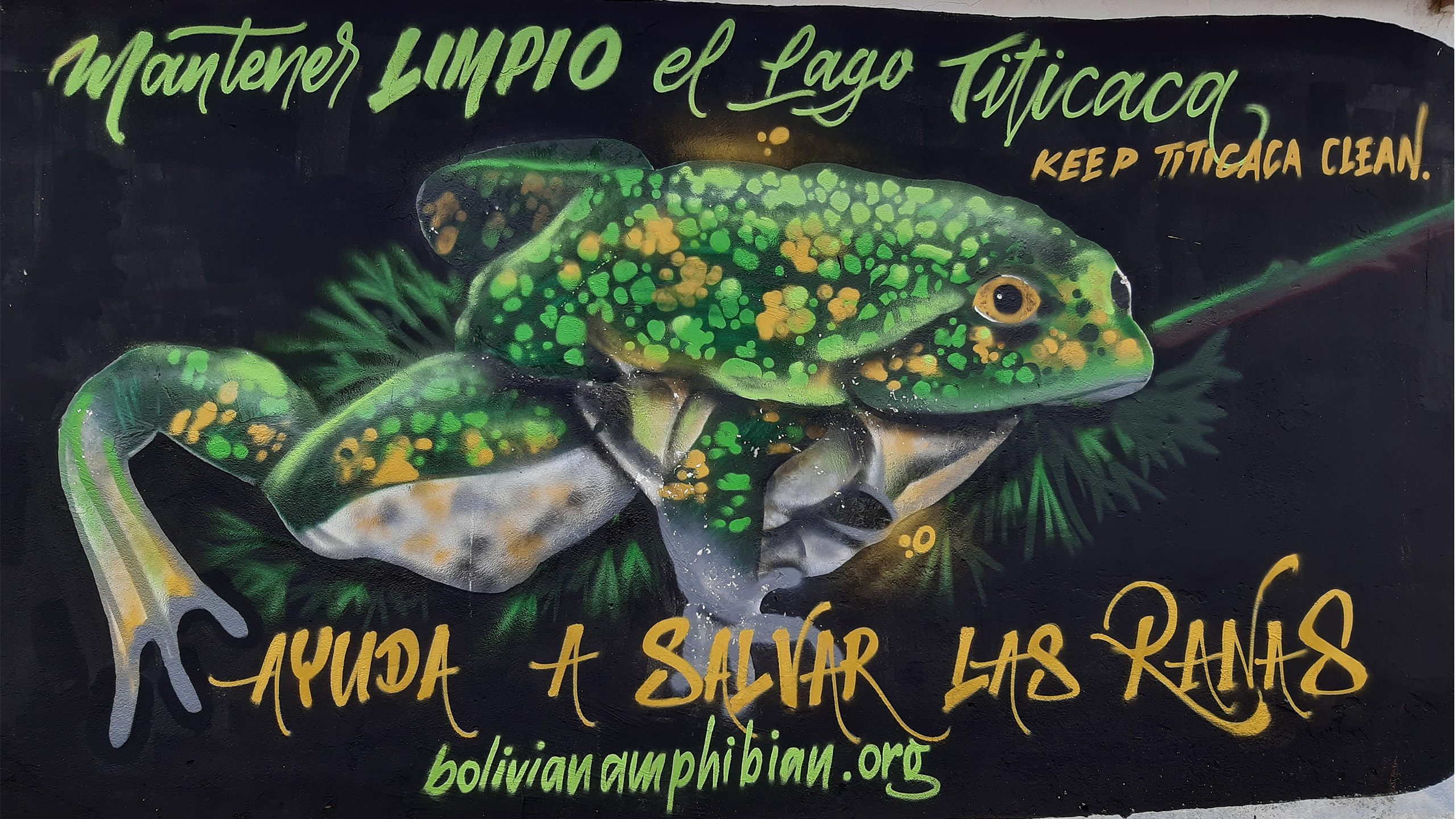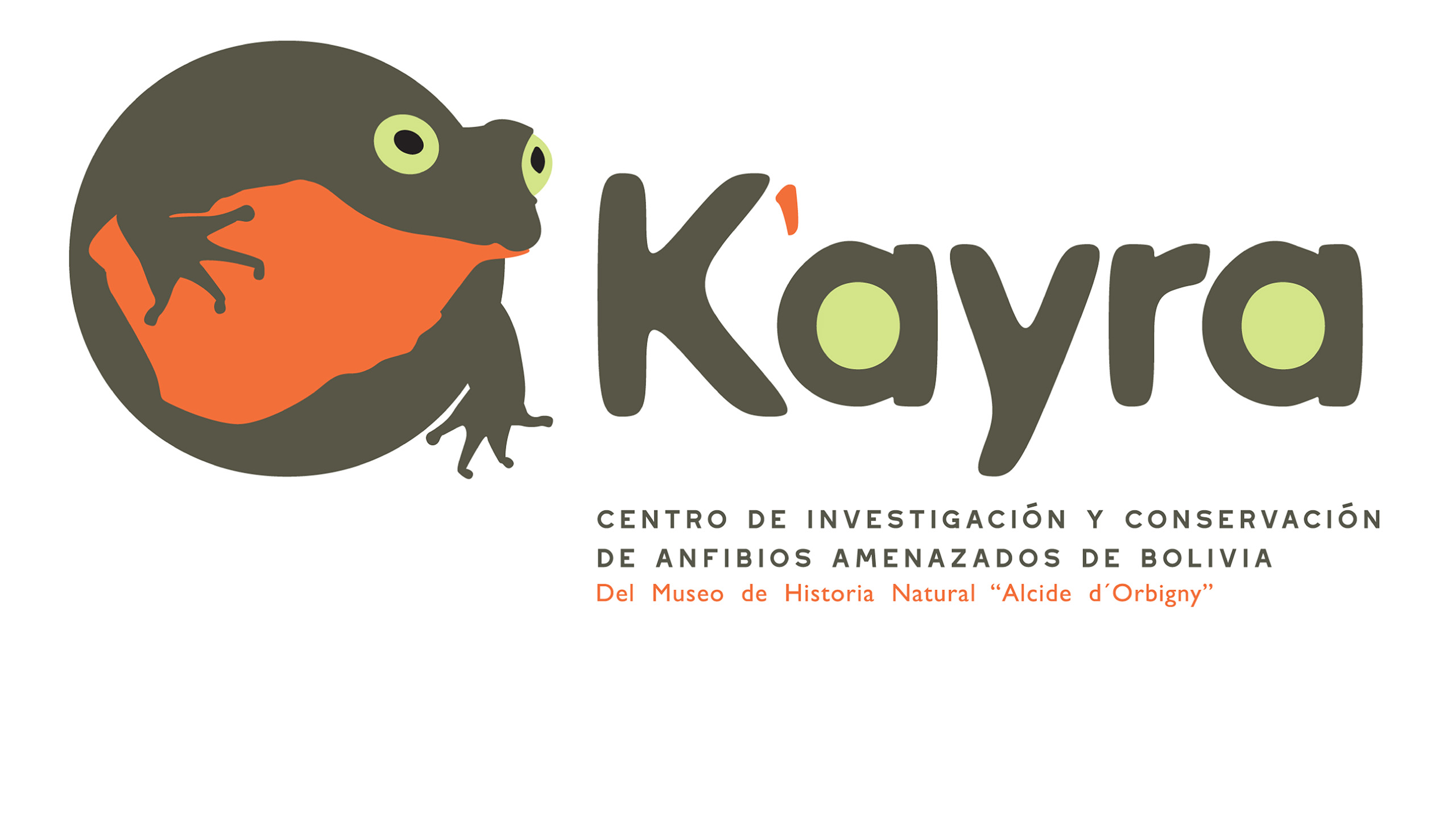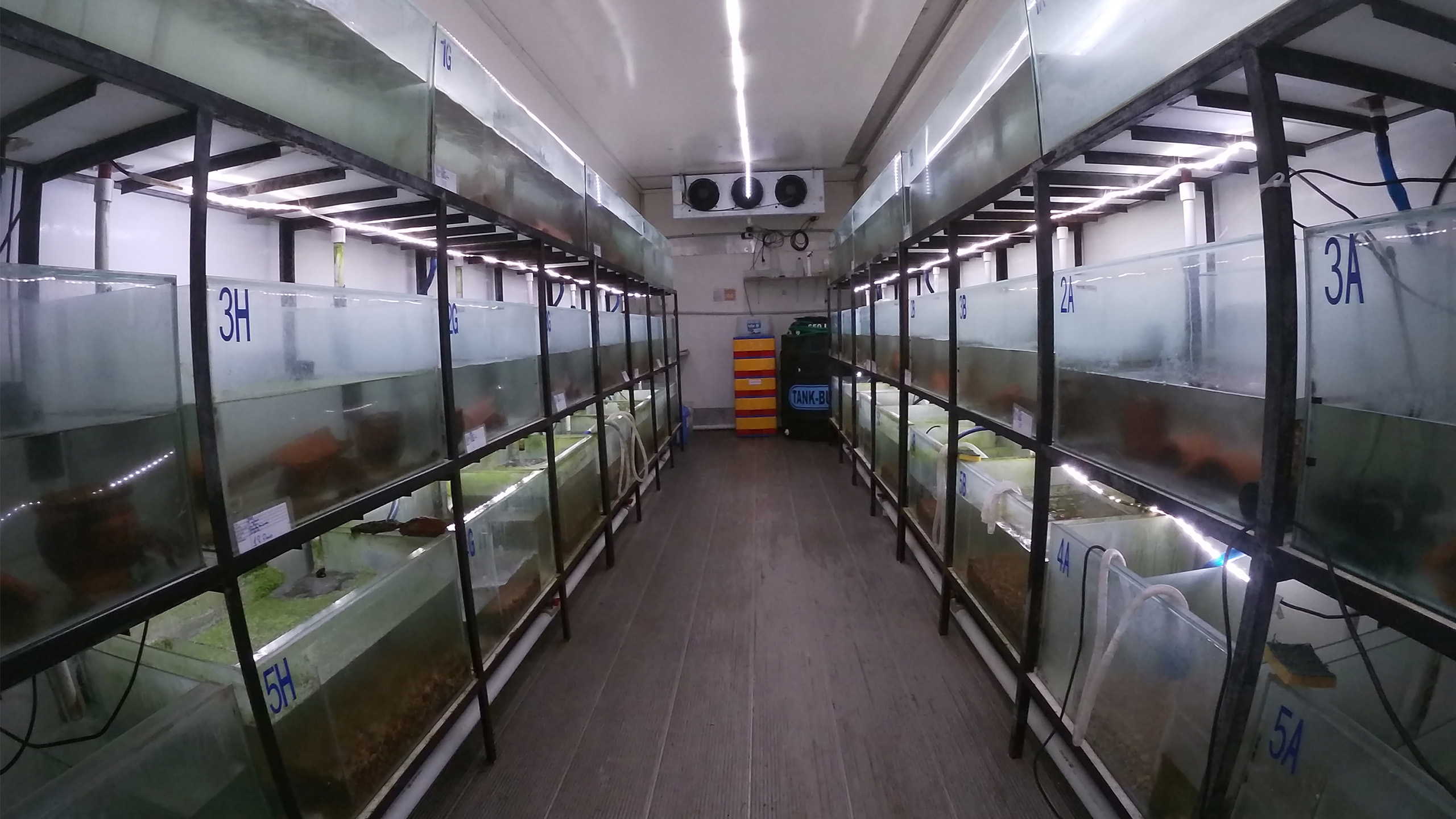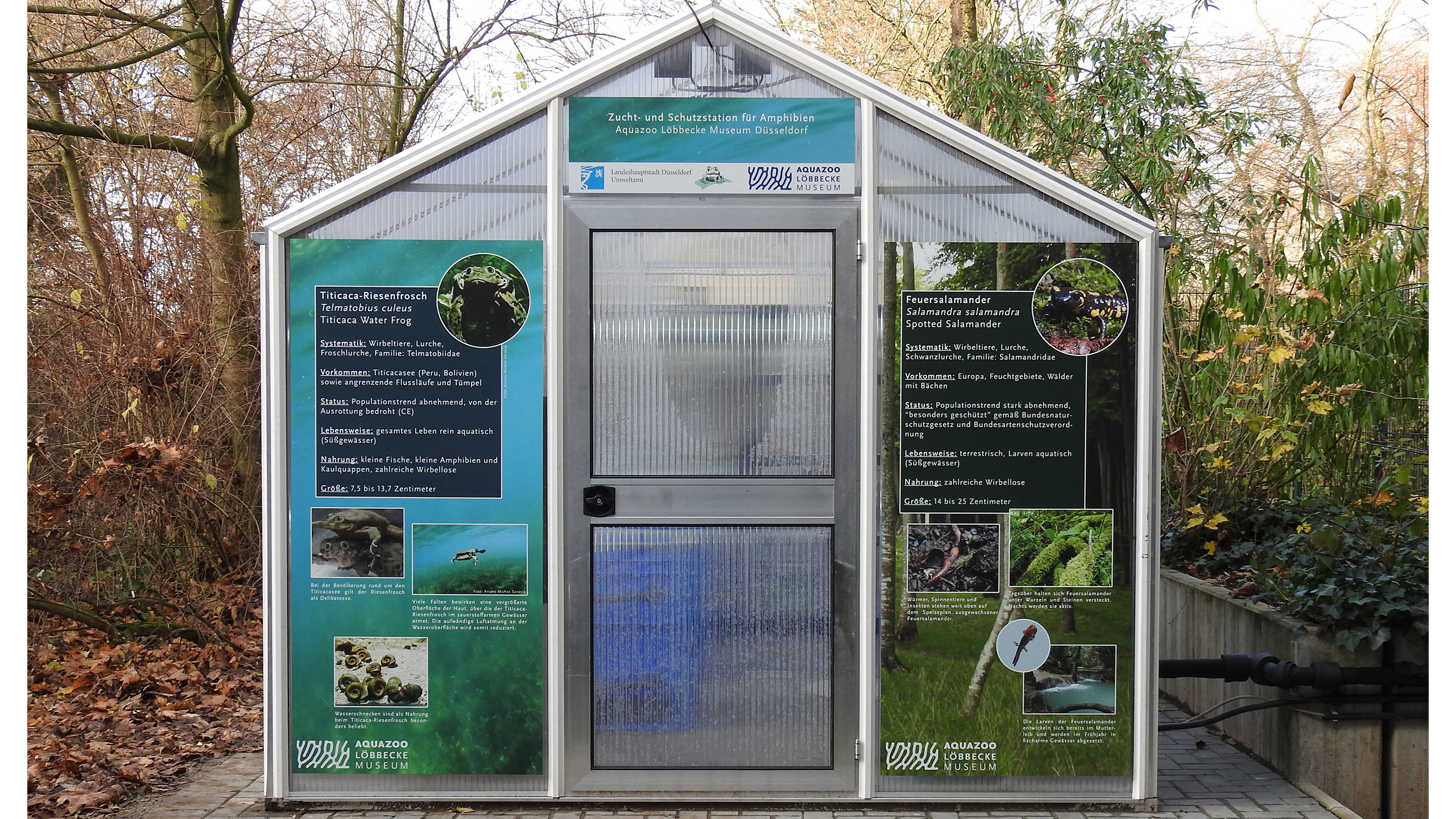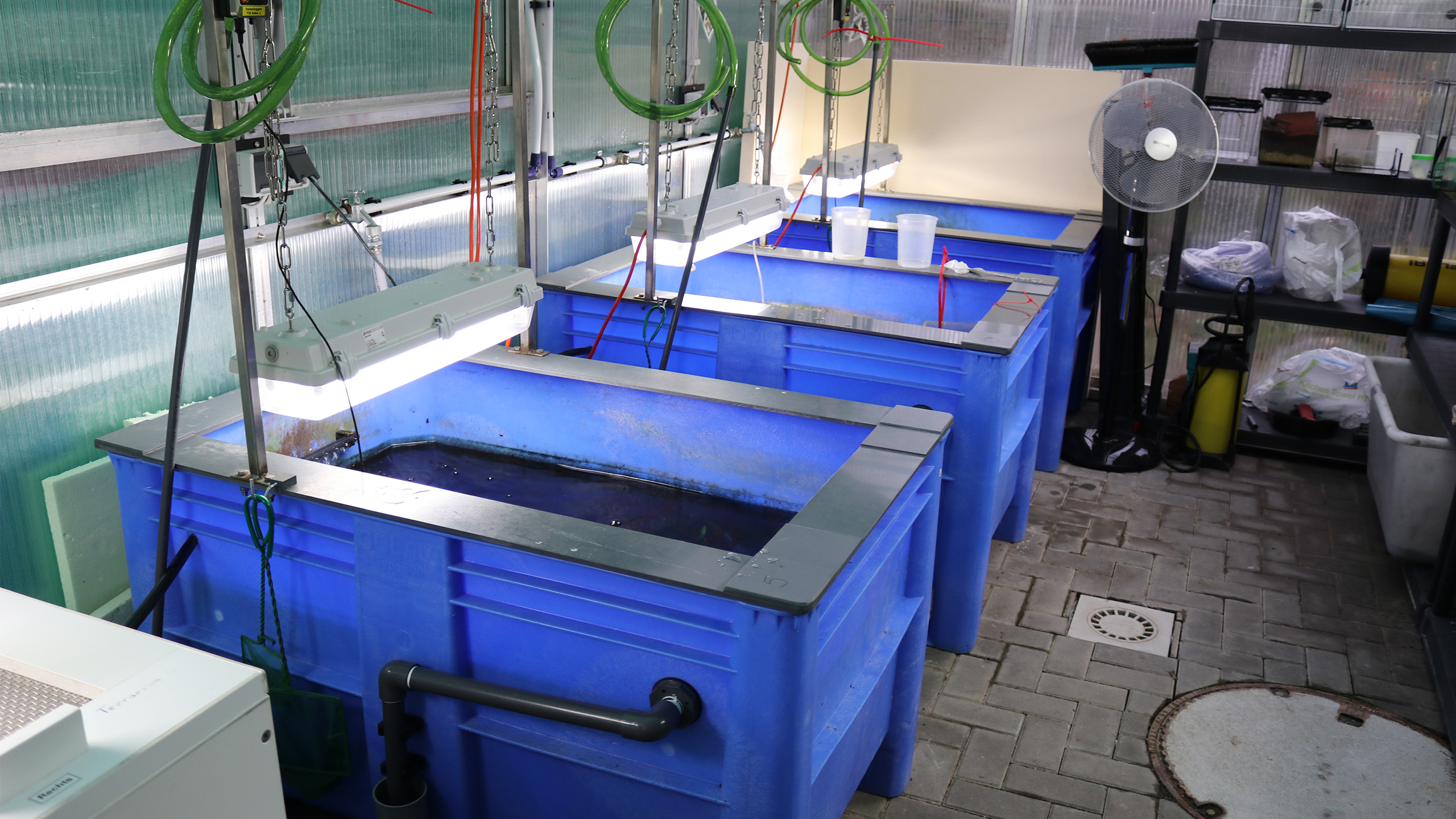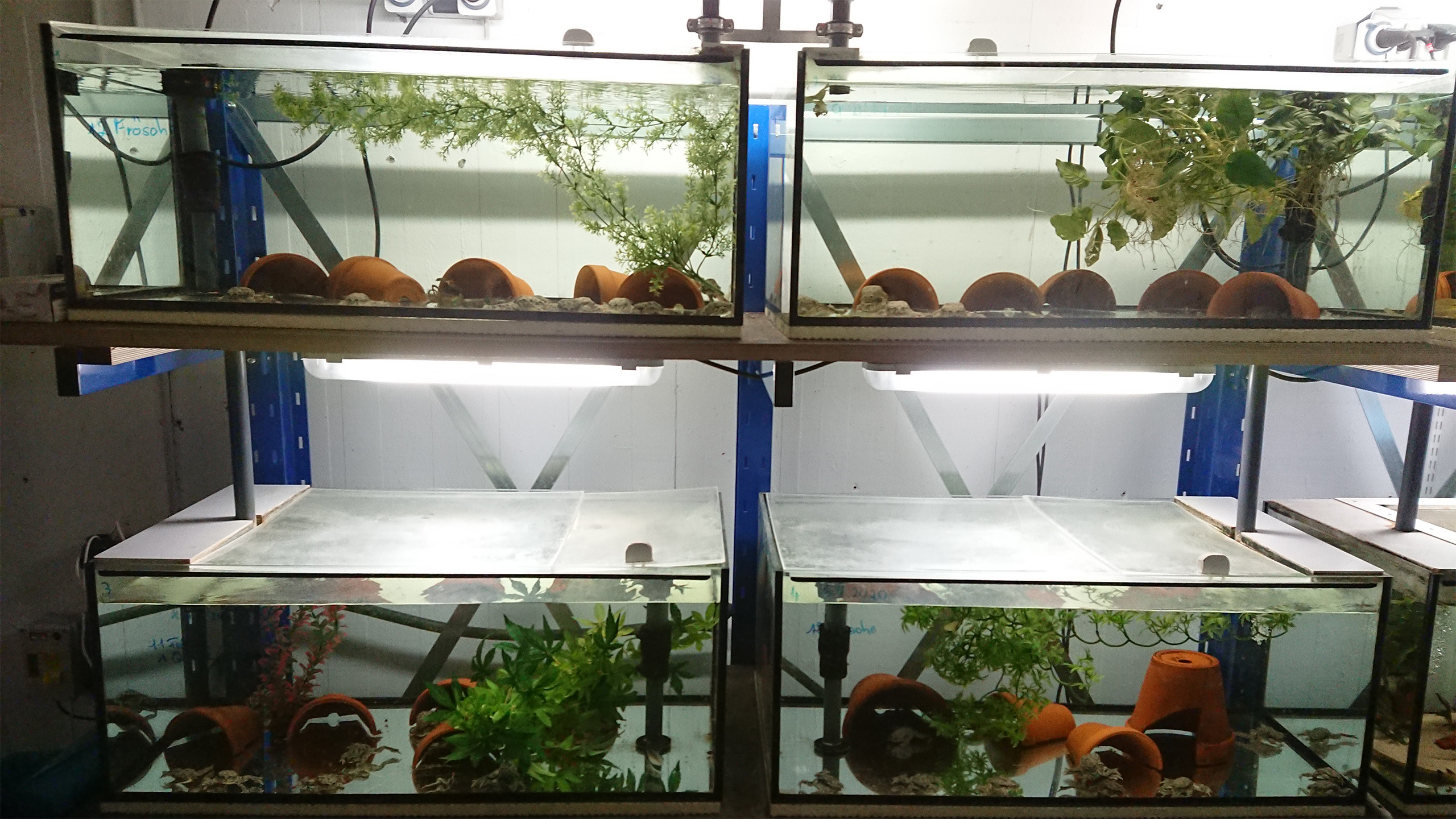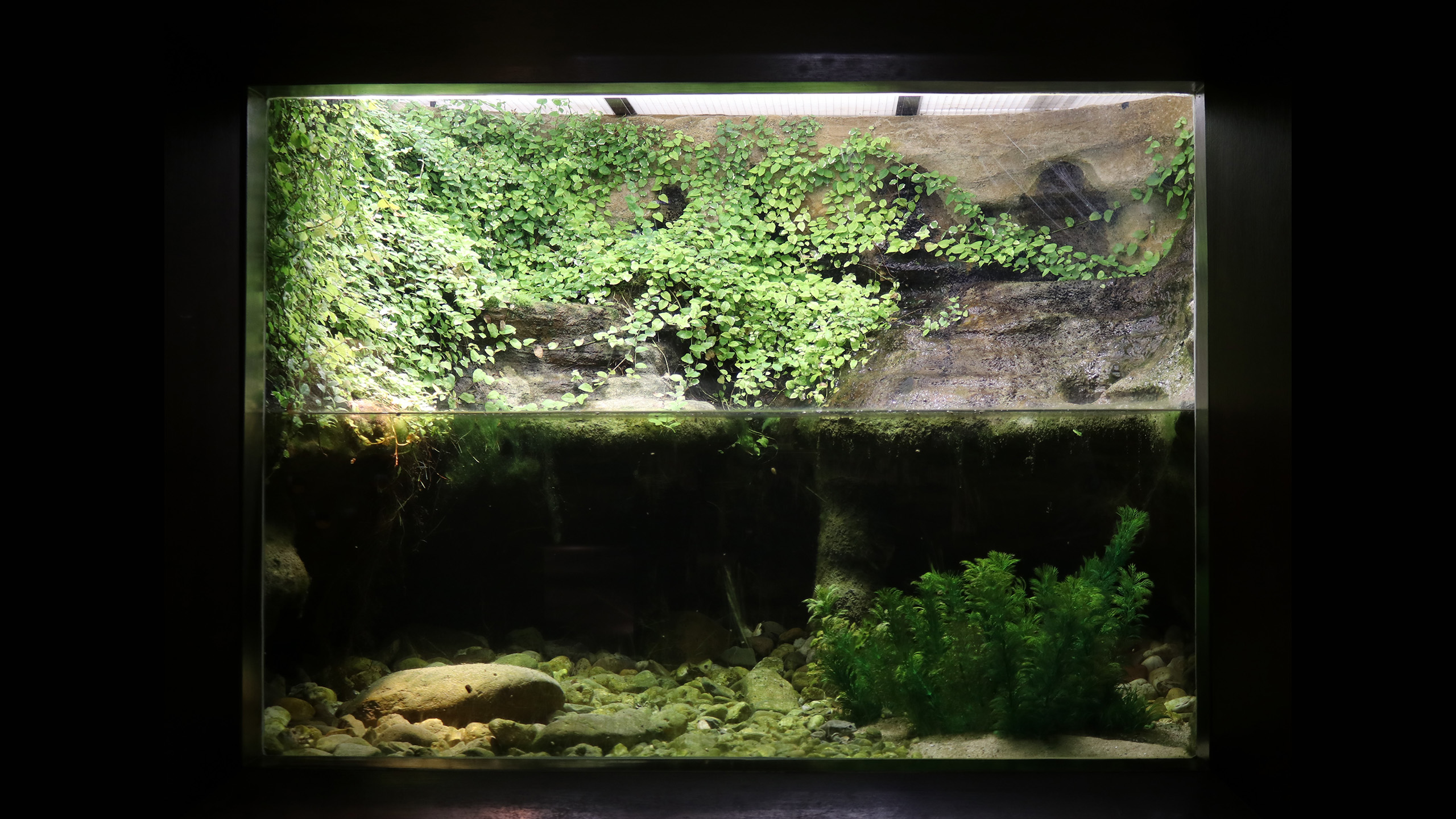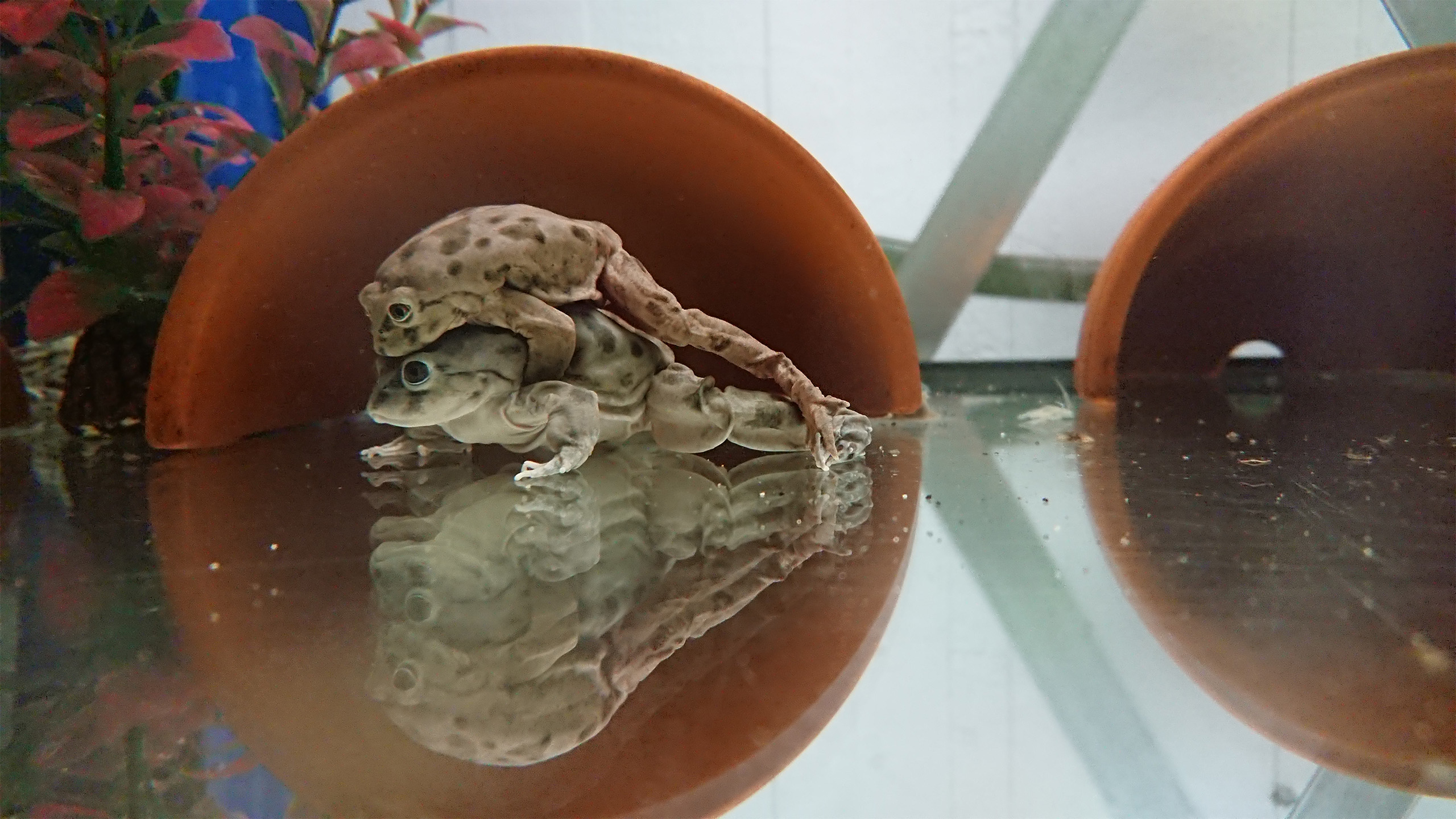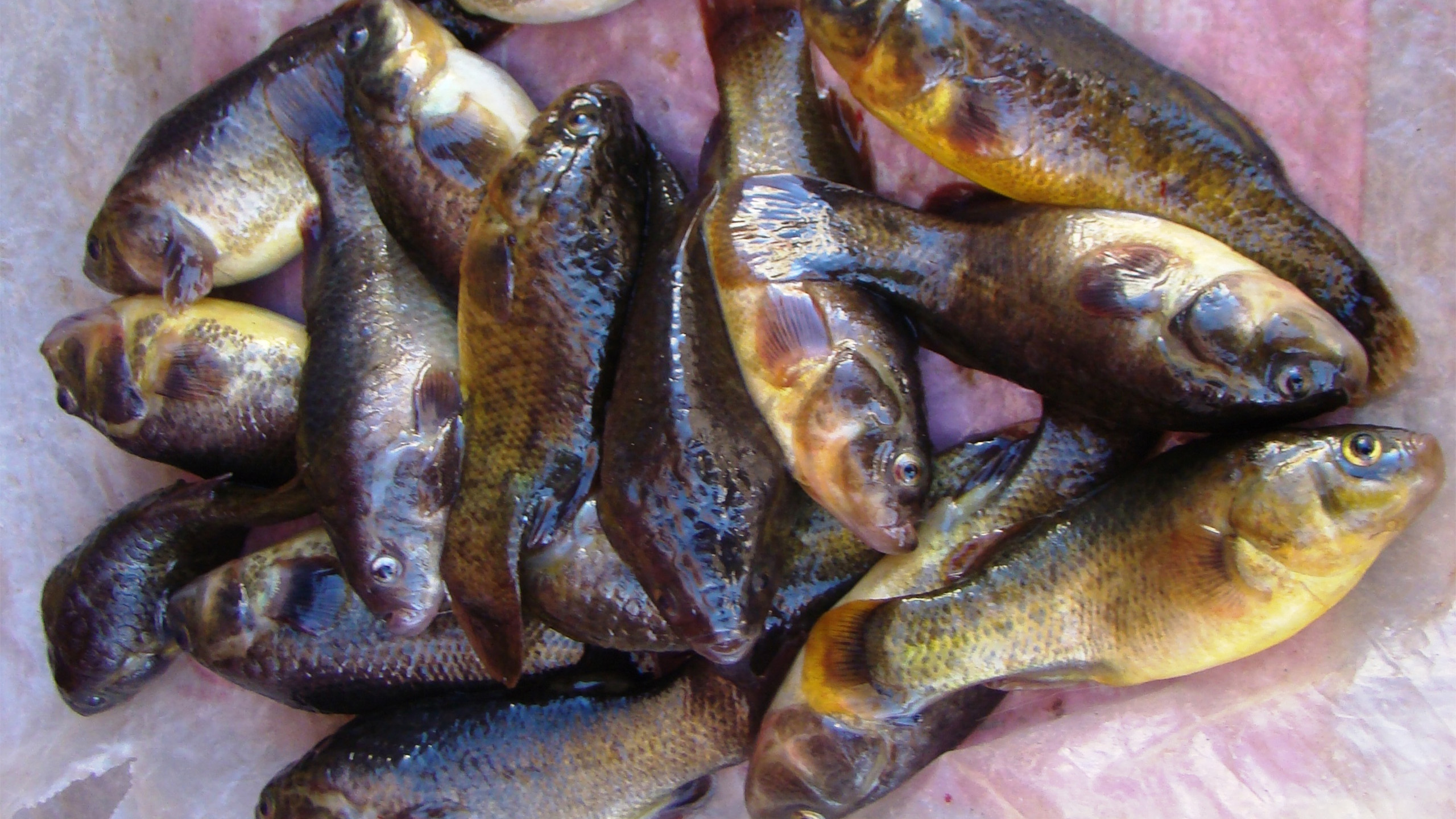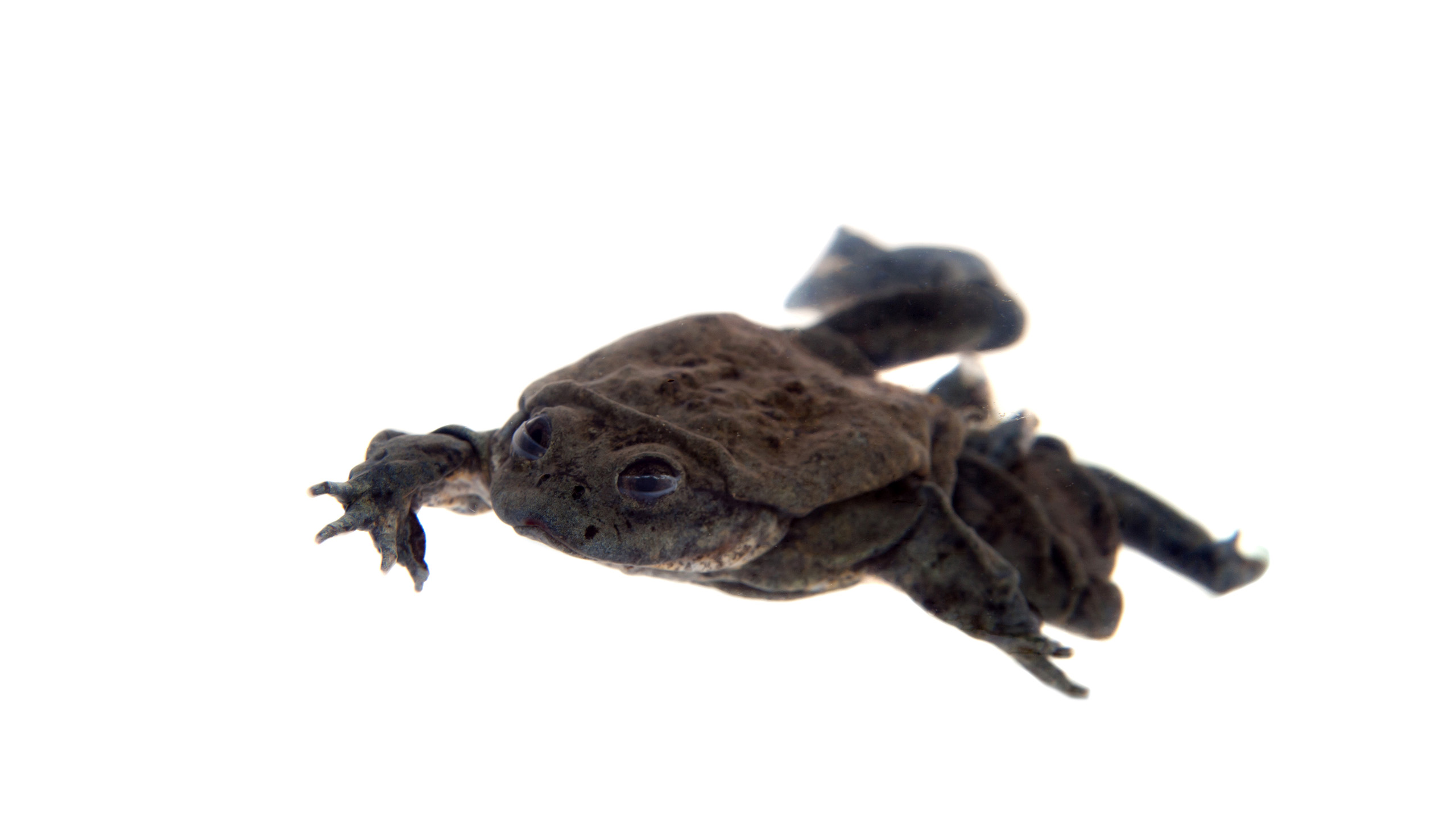Titicaca-Riesenfrosch
Telmatobius culeus
Titicaca-Riesenfrosch
Telmatobius culeus
Zielvorgabe CC
45 Haltende
Stand 11/2025
Zielvorgabe CC
225 Tiere
Stand 11/2025
Zielvorgabe CC
45 Haltende
Stand 11/2025
Zielvorgabe CC
225 Tiere
Stand 11/2025
Als der berühmte Meeresforscher Jacques Costeau in den 1960er-Jahren zum Titicaca-See im Altiplano kam, dem Hochland zwischen Peru und Bolivien, machte er bei seinen experimentellen Tauchgängen in großer Höhe einen merkwürdigen Fund: Hunderte großer, extrem faltiger Frösche lagen auf dem Boden des Gewässers herum – und schwammen bei Störung mit kräftigen Zügen davon. Durch seine TV-Serie „Geheimnisse des Meeres“ wurden diese Aufnahmen weltbekannt.
Vereint für einen Frosch
Massensterben im Altiplano
Als Biologen rund 50 Jahre später zum Titicaca-See kamen, bot sich ihnen ein ähnliches Bild. Nur lagen die merkwürdigen, extrem faltigen Frösche diesmal am Ufer des Sees – und schwammen nicht mehr davon, denn sie waren tot. Ein Massensterben hat die einst auf viele Millionen geschätzte Population dramatisch reduziert. Schuld daran ist vor allem die Wasserverschmutzung. Ein ganzes Ökosystem droht zu kollabieren angesichts von Abwässern und Schadstoffen aller Art, Müll und Übernutzung des Uferbereichs – und mit ihm der Restbestand eines der faszinierendsten Frösche der Welt.
Idylle vor dem Kollaps
Faltiger Riese
Mit 14 Zentimetern Länge und 250 Gramm Gewicht gehören die Titicaca-Riesenfrösche zu den größten Froschlurchen. Sie leben komplett aquatisch, ausschließlich im auf knapp 4.000 Metern Höhe gelegenen Titicaca-See und seinen Zuflüssen. Dabei dringen sie auch in große Tiefen vor. Das Leben unter Wasser in so großer Höhe erfordert aufgrund der geringeren Sauerstoffkonzentration spezielle Anpassungen. Die Frösche können stundenlang untergetaucht bleiben. Ihre Sauerstoffversorgung erfolgt dann über Hautatmung. Damit dafür eine möglichst große Oberfläche zur Verfügung steht, ist ihre Haut extrem faltig – das sieht so aus, als sei sie dem Frosch viel zu groß. Durch rhythmisches Auf- und Abbewegen wird sie zudem in Schwingungen versetzt, um mehr sauerstoffreiches Wasser an ihr entlangzuführen. Außerdem hat dieser Frosch ungewöhnlich viele rote Blutkörperchen und kann deshalb viel Sauerstoff binden.
Gewässersanierungen sind gut erprobt, die Erfolgsaussichten groß. Die Frage ist nur, ob es die Frösche überhaupt noch gibt, wenn es mal so weit sein wird.
Rettung im Aquarium
Wegen seines Vorkommens in nur einem einzigen Gewässersystem und der problematischen ökologischen Situation dort ist der Titicaca-Riesenfrosch in ernster Gefahr. Die Bestände gehen immer weiter zurück. Die Weltnaturschutzorganisation IUCN schätzt die Populationen als „stark gefährdet“ ein. Dabei wäre ein Überleben im See mittelfristig durchaus denkbar – wenn die Ursachen der Verschmutzung eingestellt werden und der See saniert würde, könnte er auch zukünftigen Froschgenerationen ebenso eine Heimat sein wie den vielen Menschen, die in seinem Umfeld leben und ebenfalls unter der desaströsen Umweltsituation leiden. Gewässersanierungen sind gut erprobt, die Erfolgsaussichten groß. Die Frage ist nur, ob es die Frösche überhaupt noch gibt, wenn es mal so weit sein wird. Deswegen haben Artenschutzinitiativen vor Ort in Zusammenarbeit mit der internationalen Zoo-Gemeinschaft begonnen, die Grundsteine für ein Erhaltungszuchtprogramm zu legen. Mit einigem Erfolg – die Frösche fühlen sich offenkundig wohl in ihrer neuen Umgebung und sorgen regelmäßig für Nachwuchs. Auch private Froschfreunde können nun via Citizen Conservation helfen, größere Kapazitäten für die Haltung und Zucht dieser Tiere aufzubauen.
Geheimnisvolle Höhe. Und Tiefe.
Dabei hält dieser Frosch immer noch viele Geheimnisse bereit. In Aquarien wird er bislang längst nicht so groß wie in der Natur. Liegt es daran, dass die Tiere im kalten Wasser des Sees so langsam wachsen, sodass sie erst im Lauf vieler Jahre ihre beeindruckenden Ausmaße erreichen – und so lange werden sie noch gar nicht Aquarien gehalten, als dass man das wüsste. Was man weiß: Sie werden schon recht früh geschlechtsreif, wenn sie noch weit von ihrer nachgewiesenen Maximalgröße entfernt sind. Beeinflussen Höhenlage oder Wassertiefe das Wachstum? Es bleibt noch viel zu erforschen beim Titicaca-Riesenfrosch. Hoffen wir, dass er der Welt auch langfristig erhalten bleibt und eines Tages wieder so zahlreich auf dem Grund seines einzigartigen Sees herumliegt wie einstmals zu Cousteaus Zeiten.
Für Halter
Basisinformationen zu Biologie und Haltung
Zur Haltung dieses Froschs müssen zwei Grundvoraussetzungen erfüllt sein: ein geräumiges Aquarium (ab 300, besser 500 Liter) und eine Wassertemperatur von normalerweise unter 18 °C. Ist das gewährleistet, ist die Art sehr pflegeleicht und problemlos zur Nachzucht zu bringen.
Ausführliche Haltungsempfehlungen zum Download folgen in Kürze.



